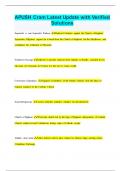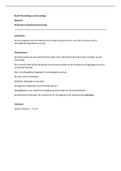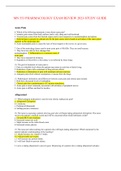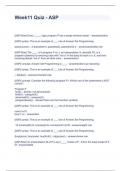Exam (elaborations)
mttc history study guide with complete solutions
- Course
- Institution
mttc history study guide with complete solutions Neolithic revolution/new stone age - Answer️️ -A prehistoric period that began about 8000 B.C. and in some areas ended as early as 3000 B.C., during which people learned to polish stone tools, make pottery, grow crops, and raise animals - als...
[Show more]












